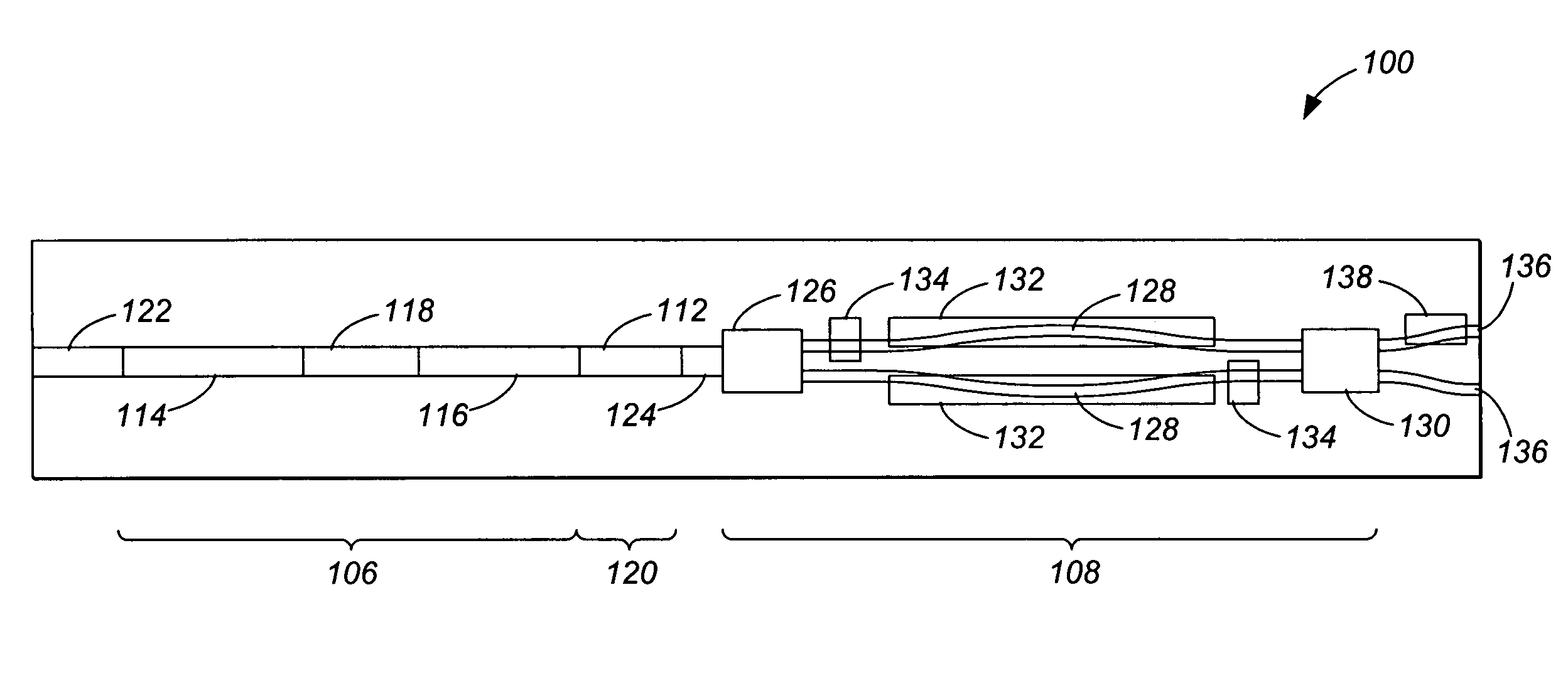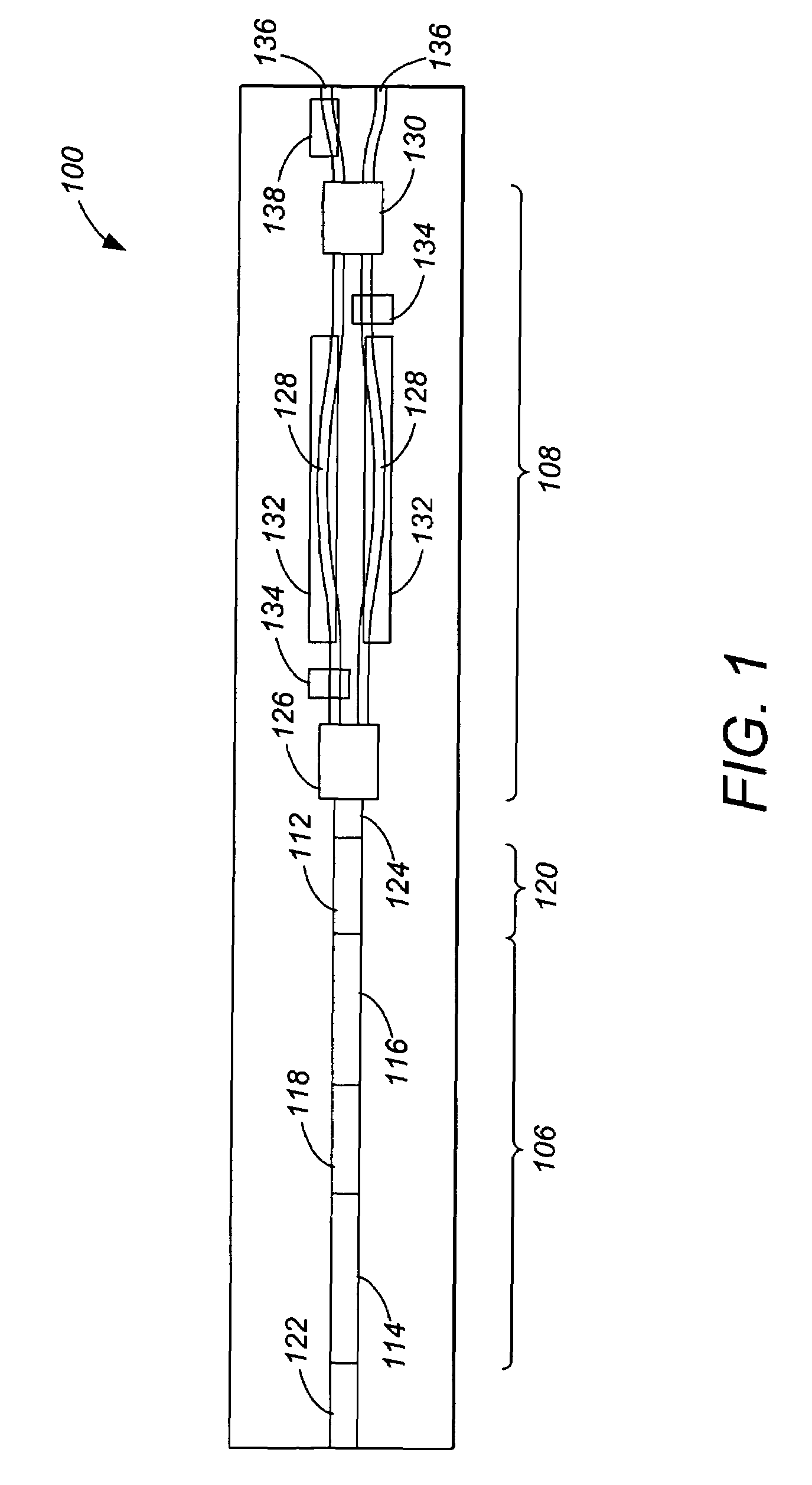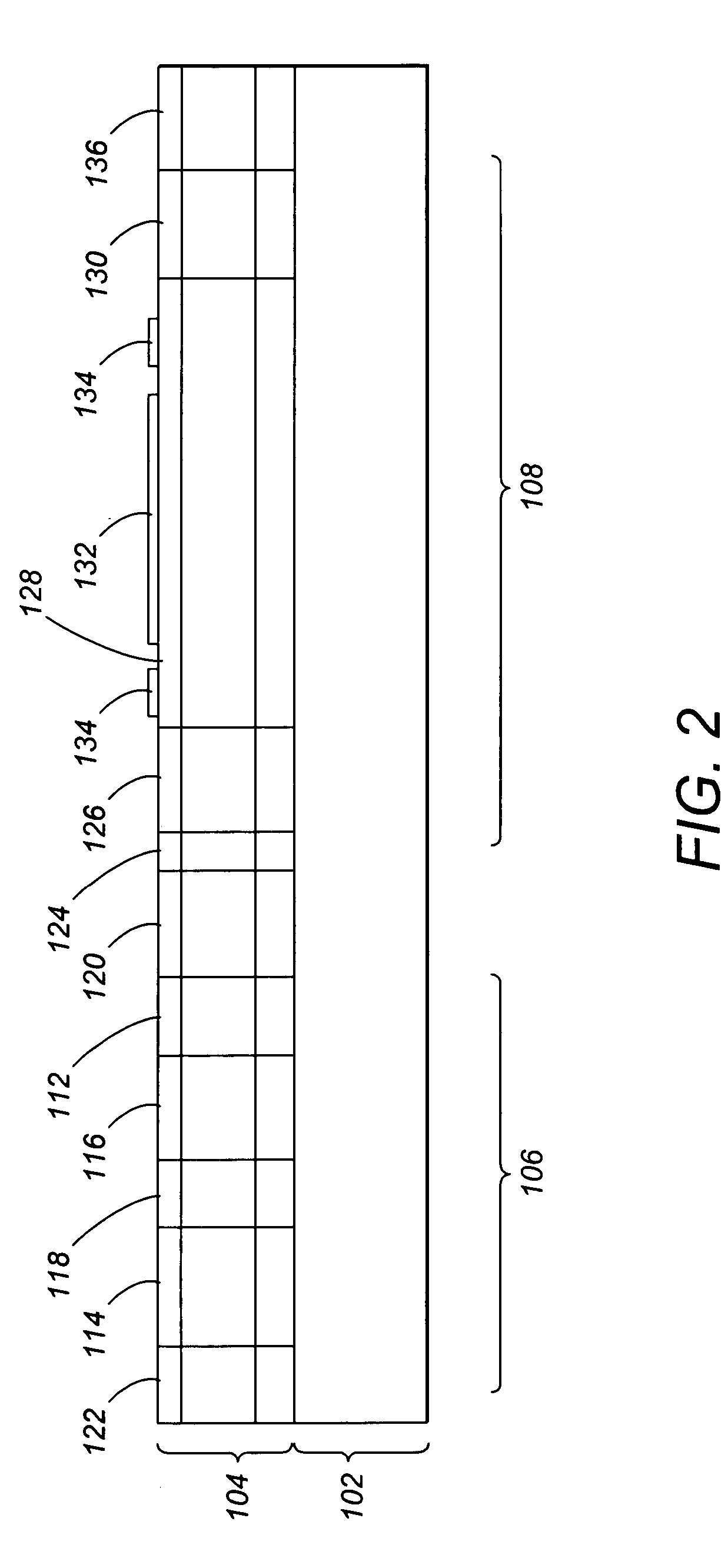Tunable laser source with monolithically integrated interferometric optical modulator
a monolithic integrated, laser source technology, applied in the direction of optical elements, instruments, semiconductor lasers, etc., can solve the problems of high cost of individual components, limited tuning range of laser designs, and integration of laser source and modulator
- Summary
- Abstract
- Description
- Claims
- Application Information
AI Technical Summary
Benefits of technology
Problems solved by technology
Method used
Image
Examples
Embodiment Construction
[0025]In the following description of the preferred embodiment, reference is made to the accompanying drawings which form a part hereof, and in which is shown by way of illustration a specific embodiment in which the invention may be practiced. It is to be understood that other embodiments may be utilized and structural changes may be made without departing from the scope of the present invention.
[0026]FIGS. 1 and 2 are views that schematically illustrate a monolithically-integrated, semiconductor optical transmitter device 100 according to one embodiment of the present invention. FIG. 2 is a cross-sectional side view of the device 100, and FIG. 1 is a top view of the device 100.
[0027]The device 100 is comprised of a common substrate 102 (which may comprise InP); at least one epitaxial structure 104 (which may comprise varying layers of InP, InGaAsP, InGaAs, InGaAsP, etc.) formed on the common substrate 102; a widely-tunable sampled grating distributed Bragg reflector (SGDBR) laser ...
PUM
| Property | Measurement | Unit |
|---|---|---|
| angle | aaaaa | aaaaa |
| wavelength range | aaaaa | aaaaa |
| angle | aaaaa | aaaaa |
Abstract
Description
Claims
Application Information
 Login to View More
Login to View More - R&D
- Intellectual Property
- Life Sciences
- Materials
- Tech Scout
- Unparalleled Data Quality
- Higher Quality Content
- 60% Fewer Hallucinations
Browse by: Latest US Patents, China's latest patents, Technical Efficacy Thesaurus, Application Domain, Technology Topic, Popular Technical Reports.
© 2025 PatSnap. All rights reserved.Legal|Privacy policy|Modern Slavery Act Transparency Statement|Sitemap|About US| Contact US: help@patsnap.com



